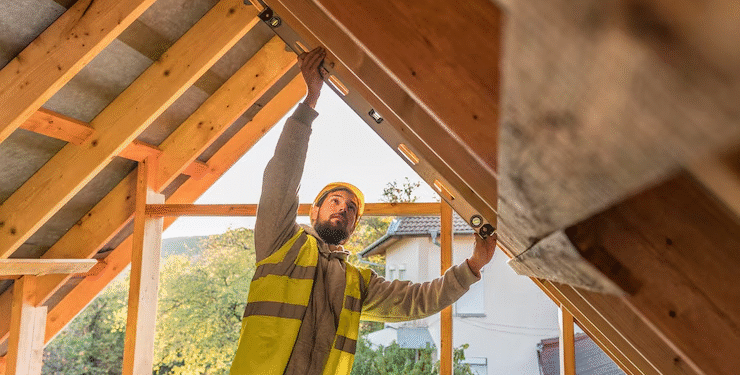Insulation is not only a solution to ensuring your home remains warm in the winter and cool during summer but also plays a significant role in energy efficiency, indoor comfort, and even future property value.
On that note, when it comes to new construction or repairing old insulation, contractors can either break or make the project.
However, most homeowners jump into the process without the necessary research and end up in pitfalls, resulting in shoddy work, high utility bills, or expensive and tedious repairs in the future.
Without proper research, you may end up choosing an inexperienced contractor to overlook key contract items, and these mistakes are more frequent than you would imagine.
But the good news is?
All these pitfalls are highly avoidable.
In this article, we will guide you through 6 of the common mistakes that you might make when selecting insulation contractors.
1. Overlook the Type of Insulation Provided
One mistake often made in selecting insulation contractors is failing to consider the variety of insulation materials each contractor utilizes.
That said, all insulation is not equal, and a contractor who sells only one type may put options available to you in a tough spot. That means using a solution that is less effective or not tailored to the climate and structure of your home.
In some cases, contractors might try to persuade you to use what is available to them, even when it is inappropriate to use. However, another material may be more energy-efficient, moisture-efficient, or economical.
What to do Instead:
Consult with an insulation contractor who takes the time to inspect your home and assess various other factors, including climate conditions, budget, building age, and usage patterns, before suggesting a solution.
They should discuss both the advantages and disadvantages of various alternatives such as batt, blown, and spray foam insulation. For example, in the case of typical insulation in walls and open attics, a batt solution is preferred.
Alternatively, blown insulation is suitable in irregular or otherwise difficult-to-cover areas, while spray foam provides better air sealing and moisture protection.
Therefore, rather than offering a one-size-fits-all solution, your contractor should provide you with the material that will best meet the needs of your home. In turn, you get long-term comfort and energy efficiency.
2. Selection Based on Price Consideration Only
It is normal to desire to minimize the cost when planning an insulation project, but simply selecting a contractor who offers the lowest price may prove counterproductive. In other words, when a price seems too good to be true, it usually is.
In this context, very low estimates can indicate the use of inferior materials, insufficient insulation coverage, untrained technicians, or cutting corners that reduce the installation’s efficiency.
What to do Instead:
Obtain precise estimates of several decent contractors and spend time comparing them next to each other. Do not simply look at the overall price.
Rather, look at materials being utilized, level of work, guarantees being provided and reputation of the contractor. In short, value should always come first over low price.
3. Not Inquiring About the Installation Process

The process of insulation is much more intricate than many homeowners would believe. It requires more than just placing material in walls or attics. The proper insulation encompasses special care regarding moisture control, air sealing, ventilation, and safety.
Therefore, failing to inquire about the process beforehand may result in incomplete tasks, energy inefficiencies, and permanent complications, such as mold or drafts.
What to do Instead:
Prior to the signing of any contract, insist that the contractor take you through their installation process. You can ask them about their approach to critical factors, such as sealing air gaps, installing vapor barriers, and managing airflow and moisture.
Further, ensure they can easily clarify if their system complies with building regulations and how it maximizes the insulation effects.
4. Failure to Have a Written Contract

It may seem like an easier option to conduct business based on a verbal agreement, but this can lead to misunderstandings, unexpected large expenses, or jobs with missing details. In the absence of a written agreement, there is little you can do to protect yourself in the event of failure.
What to do Instead:
It is essential to have a written contract detailing the project’s scope and requirements before its commencement. It must clearly define the scope of work, materials, schedule, payment terms and warranties.
5. Disregard of Reviews and Reputation
In the current digital world, you can find reviews of pretty much any service provider. Failure to take this step may result in hiring a contractor who has failed to deliver good work, missed deadlines, or even had customer conflicts.
What to do Instead:
Read reviews on services such as Google, Yelp, and so forth. You may also seek recommendations from friends or neighbors based on their personal experiences.
6. Not Verifying Credentials and Experience
Choosing a contractor without verifying their credentials is a significant risk. The fact that a person claims to provide insulation does not imply that he is trained or qualified properly.
What to do Instead:
Select a licensed, insured and certified contractor experienced in the type of insulation you require. Plus, inquire about their experience in projects similar to yours and ask for references. That said, a trusted professional would not mind giving proof of their professional qualifications.
Conclusion
Choosing the insulation contractor is a decision that affects your home’s comfort, energy costs, and resale value for years to come.
By avoiding the mentioned mistakes, like ignoring credentials, chasing the lowest price, overlooking insulation types, skipping process details, failing to check reviews, and not securing a written contract—you can greatly reduce your risk of poor outcomes.
Thus, do your research, ask the right questions, and prioritize experience and transparency for efficient insulation.













